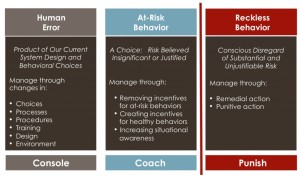5S is a basic lean tool for organizing work areas for efficiency and effectiveness. Because of its simplicity and universal applicability, it’s oftentimes used as a beginning LSS project. 5S, from the Japanese words seiri, seiton, seiso, seiketsu, and shitsuke, is often translated to Sort, Set, Shine, Standardize, and Sustain. It describes a simple, thoughtful process to organize, clean, and maintain a work area for optimal efficiency.
The Stages of 5S
Sort
Work areas should only contain what is needed. Oftentimes, however, these areas are overloaded with items rarely or never used. Sorting items allows you to identify items that aren’t used (and dispose of them) or rarely used (and move them). It’s tempting to keep items because you “might” need them at some point. Attach a red tag or sticky note to items not used frequently and set them on a designated table. If the item is used in the next month, remove the red tag and keep the item. If not, move or discard the item.
SET
Set (in order) is the organization phase. Everything should have a place, and the places should be determined by the most logical arrangement. Usually this means that objects are organized by type, and rooms are organized by arranging the most frequently used items closest to the person needing them. In a storeroom, this means organizing items in logical groupings and then placing the most frequently accessed groupings nearest the door. While saving a few steps might not seem like a big improvement, its effect can add up.
SHINE
Shine is the cleaning phase. All areas should be clean at all times. Disorganized and dirty areas create waste by obscuring needed items, decreasing workplace safety, requiring additional or repeated cleaning time, or simply by contributing to a disorganized mindset in a team.
STANDARDIZE
Standardization is the labeling and systematizing phases. Items should have clearly marked spaces. Use large, easy-to-read labels and colors to group types or categories. Create keys or legends for large storage areas.
SUSTAIN
Sustain is the perpetuating phase. Organizing a 5S event is not meant to be an annual “Spring Cleaning.” Instead, it should create lasting, sustained organization through design, training, and maintenance. Labels, color-coding, and other systems established in the standardize phase must be kept up. There must be a plan for keeping the area cleaned. Everyone on the team must be trained in not only where to find things, but also how to store things. Finally, there must be routine monitoring and follow-up. This doesn’t mean a manager needs to audit a work space or storage area every month. In fact, systems are usually more sustainable when auditing is delegated to team members and rotated. Create a simple checklist and have a different staff member complete it each month.


